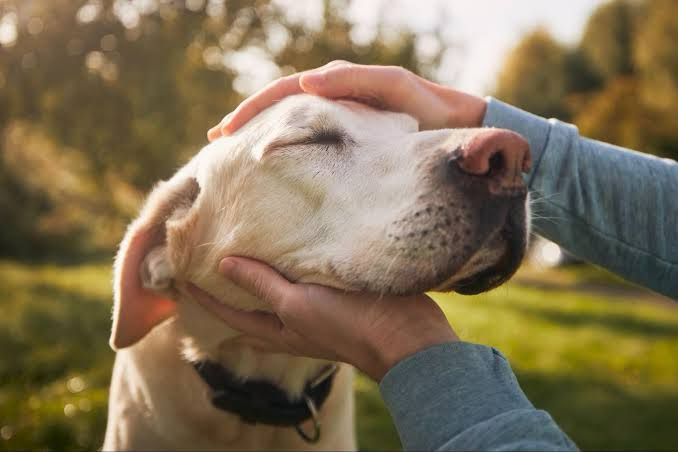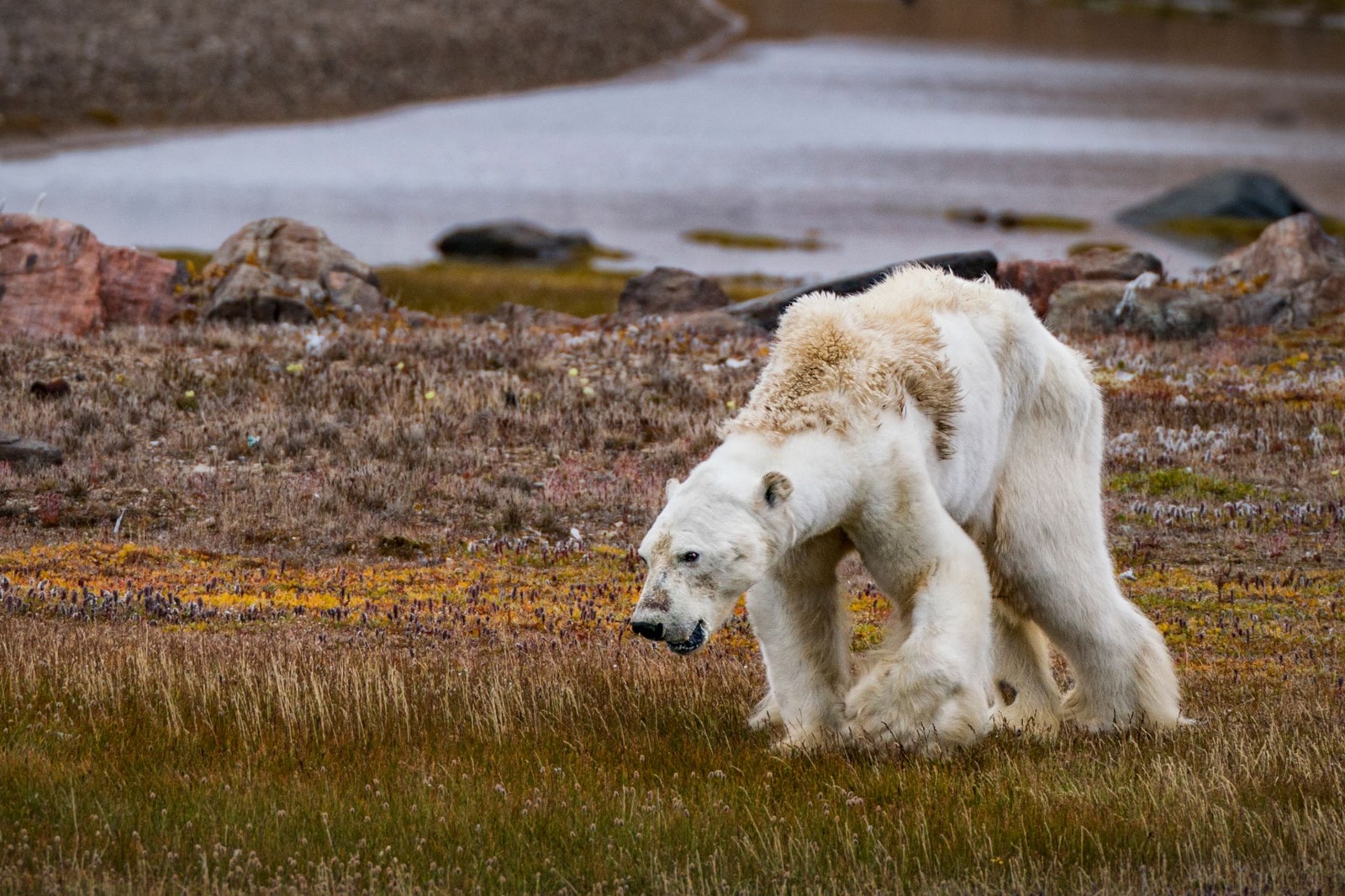
Keeping a Husky Cool in Indian Summers: Tips for Home Care"
Huskies are built for cold weather, making Indian summers especially challenging for them. With proper home care, such as providing cool indoor spaces, hydration, and avoiding peak heat hours, they can remain comfortable and healthy. Avoid shaving their coat, offer frozen treats, and be alert to signs of heatstroke. A little care goes a long way in helping Huskies adapt safely to India’s hot climate.
🐶 Pet Star
44 min read · 14, Jun 2025

Introduction
Huskies, with their majestic appearance, thick double coats, and piercing eyes, are a breed adored by many. Originally bred to pull sleds in the freezing temperatures of Siberia, they are built for endurance in cold climates—not the sweltering heat of Indian summers.
But thanks to their rising popularity in India, many pet parents are now faced with a crucial challenge: how to keep a Husky comfortable and safe in hot and humid conditions.
This article will serve as your complete guide on caring for a Husky at home in India, especially during the summer months—covering cooling tips, grooming hacks, hydration, indoor comfort, diet, and common mistakes to avoid. Keeping a Siberian Husky cool and comfortable during the sweltering Indian summers is a significant challenge that demands meticulous planning, proactive adjustments to their care routine, and an unwavering commitment from their owners. Huskies, originating from the harsh, sub-arctic environments of Siberia, are genetically predisposed to thrive in cold climates, possessing a dense double coat designed for insulation against extreme cold, not protection against intense heat and humidity. Their physiology, optimized for pulling sleds across frozen landscapes, makes them highly susceptible to overheating, heatstroke, and a host of heat-related ailments when exposed to the prolonged high temperatures and often stifling humidity prevalent across much of India for several months of the year. Therefore, successful home care for a Husky in an Indian summer transcends mere comfort; it is a critical life-saving endeavor, requiring a comprehensive strategy encompassing environmental modifications, adapted exercise routines, specific grooming practices, dietary adjustments, and constant vigilance for signs of heat stress. Without these specialized measures, the well-being and indeed the very survival of a Husky in such a climate can be severely compromised, making informed and dedicated ownership absolutely essential.
The most crucial aspect of keeping a Husky cool indoors is environmental control. Air conditioning is not a luxury but a necessity for Huskies in Indian summers. During the hottest parts of the day, particularly from late morning to late evening, the Husky must be kept in air-conditioned environments. The ambient temperature should ideally be maintained between 22-25°C (72-77°F). If continuous air conditioning is not feasible or in case of power outages, a combination of strong fans, evaporative coolers (desert coolers, which work best in drier heat, but can still offer some relief in humid conditions), and open windows (with secure screens to prevent escapes) to create cross-ventilation can provide some respite, but these are often insufficient for a Husky in extreme heat. During non-AC hours, place damp towels or cooling mats on the floor where they can lie down. Ensure these are always clean and mold-free. Tiled or marble floors can offer a naturally cooler surface compared to carpets or rugs. Restricting access to direct sunlight, even through windows, during peak daytime hours is also important. Use blackout curtains or blinds to block out sun exposure, keeping rooms cooler. For outdoor areas, never leave a Husky unsupervised or for extended periods in outdoor spaces during summer. If they must be briefly outside, ensure they have constant access to ample shade (e.g., under a large, dense tree or a well-ventilated, elevated canopy) and multiple bowls of fresh, cool water that cannot be easily tipped over. A kiddie pool filled with shallow cool water can offer a great way for them to cool their paws and belly, but ensure the water is clean and changed frequently. Misting fans can also provide some relief in semi-outdoor settings.
Exercise management is another critical area for summer care. Labradors are high-energy dogs, but their intense need for physical activity must be balanced with the extreme heat risk. All outdoor exercise must be restricted to the very coolest parts of the day: early mornings (before sunrise or within an hour of it) and late evenings (after sunset). During these times, keep walks short (15-20 minutes initially, adjusting based on your dog's tolerance), leisurely, and avoid strenuous activities like running or intense fetching. The "five-second rule" for pavement temperature is vital: place the back of your hand on the asphalt; if you can't hold it there comfortably for five seconds, it's too hot for your Husky's paws. Opt for walks on grass or dirt paths. Throughout the day, focus on mental stimulation indoors to burn off energy. Puzzle toys, interactive feeders, training sessions (practicing new tricks or reinforcing old commands), scent work, and indoor games like hide-and-seek can help tire a Husky's mind without overexerting their body in the heat. Indoor play should also be moderated to prevent overheating. Consider doggy daycare services that offer air-conditioned facilities and supervised play if your Husky requires more social interaction and structured activity than you can provide safely at home.
Grooming plays a crucial, though often misunderstood, role in a Husky's summer comfort. Never shave a Husky's double coat. While counterintuitive, shaving removes their natural insulation, making them more susceptible to sunburn, insect bites, and actually impairing their ability to regulate body temperature. The undercoat insulates against both cold and heat, and the longer guard hairs provide protection from UV radiation. Instead, regular and thorough de-shedding is key. Brush your Husky daily, or at least every other day, using a slicker brush, an undercoat rake, and a de-shedding tool (like a Furminator, used sparingly to avoid damaging the coat). This removes loose undercoat, allowing for better air circulation close to the skin and preventing mats, which can trap heat. Bathing can provide temporary relief, but over-bathing can strip natural oils, leading to skin issues. When bathing, use cool water and a dog-specific shampoo, ensuring a thorough rinse. The most crucial part is thorough drying, especially of the undercoat, to prevent skin infections (hot spots) and fungal growth in humid conditions. Using a high-velocity pet dryer can aid in quickly and thoroughly drying the coat while also helping to remove loose fur.
Dietary adjustments and hydration strategies are also important. While a significant caloric reduction might not be necessary if their activity level is only slightly decreased, monitor their weight to prevent obesity. Some owners find that feeding during the cooler parts of the day (early morning and late evening) can encourage better appetite. Constant access to fresh, cool water is paramount. Consider adding ice cubes to their water or using a pet fountain to encourage drinking. You can also offer low-sodium chicken or beef broth (diluted) or make "pupsicles" from diluted fruit juices (apple, watermelon - ensuring no toxic ingredients like xylitol) or plain yogurt for a refreshing treat that helps with hydration. Watermelon (seedless) and cucumber are excellent hydrating snacks.
Finally, constant vigilance for signs of heat stress is non-negotiable. Huskies are stoic, and early signs of discomfort can be subtle. Symptoms of overheating and heatstroke include excessive panting (more than usual, even at rest), loud panting, lethargy, drooling, glazed eyes, a bright red or purple tongue, staggering, vomiting, diarrhea, rapid heart rate, muscle tremors, or collapse. If you observe any of these signs, act immediately: move your Husky to a cool, air-conditioned space, offer cool (not ice-cold) water, apply cool (not ice-cold) wet towels to their belly, armpits, and groin, and use a fan to aid evaporation. Seek immediate veterinary attention; heatstroke is a medical emergency that can lead to organ failure and death rapidly. Beyond heatstroke, be mindful of other summer-related issues like sunburn (especially on light-colored noses or thin-haired areas), mosquito-borne diseases (heartworm), and skin infections caused by humidity or dampness. Regular health checks, including checking paws, ears, and skin for any abnormalities, become even more critical during summer.
In conclusion, managing a Siberian Husky in the intense heat of Indian summers requires a highly dedicated and multi-faceted approach, transforming home care into a year-round commitment to their unique physiological needs. This comprehensive strategy hinges on providing consistent access to air-conditioned environments, meticulously adapting exercise routines to cooler hours and emphasizing indoor mental stimulation, and implementing specialized grooming techniques that focus on de-shedding rather than shaving their protective double coat. Constant vigilance for signs of heat stress, coupled with proactive hydration strategies and appropriate dietary adjustments, are life-saving measures. By understanding and diligently applying these summer-specific tips, owners can mitigate the severe risks posed by the Indian climate, ensuring their beloved Labradors remain comfortable, healthy, and enjoy a high quality of life despite their northern heritage, fostering a long and fulfilling companionship.
Understanding the Husky’s Coat and Temperature Sensitivity
Before diving into summer care, it’s important to understand your Husky’s physical build:
- Double Coat: Consists of a soft, insulating undercoat and a coarse outer layer that protects against extreme cold.
- Heat Sensitivity: Huskies do not tolerate high humidity and temperatures above 25°C (77°F) very well.
- Natural Adaptation: They tend to conserve energy and become less active in heat, a behavior known as "heat dormancy."
Therefore, their care must focus on cooling their body, minimizing heat exposure, and ensuring hydration throughout the day.
Signs Your Husky Is Overheating
Keep a close eye on your dog for the following symptoms of heat stress or heatstroke:
- Excessive panting
- Red gums or tongue
- Drooling
- Lethargy
- Vomiting
- Rapid heartbeat
- Disorientation or unsteady movement
Tip: If your Husky shows any of these signs, move them to a cool place, offer water, and consult your vet immediately.
Top 10 Tips to Keep Your Husky Cool at Home in Indian Summers
1. Provide a Cool Indoor Environment
Ensure your Husky spends most of their time indoors during peak heat hours (10 AM – 6 PM).
Tips:
- Use fans, air coolers, or ACs to keep the room temperature low.
- Keep curtains drawn to block sunlight.
- Provide tiles or marble flooring areas where your Husky can lie down and cool off.
- Allow free movement to find the coolest spots in the house.
2. Maintain Proper Hydration
Huskies need constant access to clean, cool water—not just once or twice a day.
Tips:
- Place multiple water bowls around the house.
- Add ice cubes to water bowls occasionally.
- Offer coconut water, buttermilk, or ORS solution (in moderation) during extremely hot days.
3. Avoid Outdoor Walks During Peak Heat
Huskies are energetic, but they must not be exercised during high temperatures.
Best Times for Walks:
- Early morning: Before 8 AM
- Late evening: After 7 PM
Tips:
- Check the pavement with your hand. If it’s too hot for you, it’s too hot for their paws.
- Carry a portable water bottle or doggy water bowl for outdoor trips.
- Keep walks short and shaded.
4. Offer Cooling Foods in Diet
Adjust your Husky’s diet in summer to prevent overheating and dehydration.
Cool-Boosting Additions:
- Watermelon (seedless)
- Cucumber
- Yogurt (plain and unsweetened)
- Chicken broth ice cubes
- Boiled eggs
- Buttermilk
Avoid: Spicy or oily foods, excessive protein, and salty treats in hot weather.
5. Use DIY Cooling Pads or Mats
Invest in or make cooling mats that help your Husky relax.
DIY Idea:
Freeze a bottle of water, wrap it in a towel, and place it where your Husky naps.
Also Try:
Soak a towel in cold water and lay it on the floor for your Husky to lie on.
6. Never Shave a Husky’s Coat
It’s a common mistake to shave Huskies thinking it will keep them cooler. Do NOT shave their double coat—it protects them from both heat and cold.
What to do instead:
- Brush daily using an undercoat rake to remove loose hair.
- Bathe once every 2–3 weeks with a mild, cooling dog shampoo.
- Keep their coat clean, untangled, and well-ventilated.
7. Limit Playtime and Exercise
Huskies love running and playing—but intense exercise in heat can lead to heatstroke.
Tips:
- Switch to indoor games like tug-of-war or treat hunting.
- Give them frozen toys or stuffed kongs to stay mentally engaged.
- Keep outdoor running and fetch for early mornings or cool evenings.
8. Use Fans and Cooling Accessories
There are multiple cooling accessories available to beat the summer heat.
Try These:
- Dog-specific cooling vests or bandanas
- Clip-on fans on crates or beds
- Dog pools for supervised splashing fun
Even a spray bottle with cool water misted on their paws and belly can bring relief.
9. Grooming for Summer Comfort
While shaving is a no-go, smart grooming helps a lot.
Grooming Checklist:
- Daily brushing to prevent heat-trapping mats
- Use de-shedding tools to remove loose undercoat
- Clean ears and trim nails regularly
- Check for ticks, as heat makes them more active
Grooming not only helps in cooling but also improves airflow to the skin.
10. Create a Calm Summer Routine
Overstimulation and stress can elevate your Husky’s body temperature.
Tips for a Peaceful Routine:
- Keep a fixed schedule for feeding, walks, and play
- Avoid loud noises, fireworks, or stressful environments
- Give them a dark, quiet corner to rest during the hottest hours
Huskies also enjoy cool naps and silent bonding time—don't underestimate the power of peace.
DIY Cooling Treats for Huskies
1. Frozen Yogurt Cubes
Mix plain yogurt with fruit puree (banana, blueberry) and freeze in molds.
2. Ice Bone Broth Popsicles
Pour chicken broth into an ice tray with bits of boiled chicken.
3. Chilled Watermelon Balls
Scoop seedless watermelon, freeze for 30 mins, and serve as treats.
4. Peanut Butter and Banana Pupsicles
Blend ripe banana with peanut butter and freeze in silicone molds.
These are not only cooling but also super fun and tasty for your furry friend.
What NOT to Do During Summers
- Don’t leave your Husky outside in direct sun
- Don’t leave them inside a parked car—even for 5 minutes
- Don’t force exercise when they seem tired or panting
- Don’t ignore subtle signs of discomfort
- Don’t use human cooling products without vet approval
Vet Advice: When to Seek Help
Call your vet if your Husky shows:
- Heavy or constant panting
- Diarrhea or vomiting
- Gums turning pale or dark red
- Extreme lethargy or confusion
- Collapsing or difficulty walking
Summer heat can be fatal for Huskies if not addressed in time. Preventive care is your biggest ally.
Conclusion
Living with a Siberian Husky in India’s tropical or semi-tropical climate can be challenging—but with intentional care, love, and planning, it’s very much manageable.
Your Husky relies on you to provide a cool, calm, and safe environment when the sun is blazing outside. By focusing on hydration, grooming, cooling strategies, and adjusting their routine, you’ll not only protect them from the dangers of heatstroke but also give them a joyful, active, and healthy summer.
Remember, a happy Husky is a cool Husky—both inside and out!
Q&A Section
Q1: Why do Huskies struggle in Indian summers?
Ans: Huskies have a thick double coat built for cold climates. Indian summers are hot and humid, making it difficult for them to regulate body temperature, leading to overheating or heatstroke.
Q2: Should Huskies be kept indoors during peak heat hours?
Ans: Yes, keeping Huskies indoors during peak heat (10 AM to 4 PM) helps protect them from direct sun exposure and prevents overheating.
Q3: How can I keep my Husky's room cool?
Ans: Use fans, air conditioning, or coolers. Keep windows open for ventilation and close curtains to block sunlight. Cooling mats or damp towels can also help.
Q4: Is it safe to trim a Husky’s coat in summer?
Ans: No, trimming or shaving a Husky’s coat can damage its natural insulation. Instead, brush regularly to remove loose fur and allow better airflow.
Q5: What is the best time to walk a Husky during summers?
Ans: Early mornings (before 8 AM) or late evenings (after 6 PM) are ideal when the temperatures are lower and pavements are cooler.
Q6: What kind of water care should be given to Huskies in summer?
Ans: Always keep clean, cool drinking water available. Add ice cubes occasionally and encourage frequent drinking to keep your Husky hydrated.
Q7: Are there any summer-friendly treats for Huskies?
Ans: Yes! Frozen treats like ice cubes with fruit, frozen chicken broth, or yogurt-based popsicles are refreshing and safe in moderation.
Q8: Can Huskies be bathed frequently in summer?
Ans: Bathe only when necessary (once every few weeks) using a mild dog shampoo. Over-bathing can strip natural oils and dry out their skin.
Q9: How do I check if my Husky is overheating?
Ans: Signs include excessive panting, drooling, lethargy, red gums, or vomiting. If symptoms appear, move them to a cool place and give water. Seek vet help immediately.
Q10: Can ceiling or table fans help Huskies cool down?
Ans: Yes, while Huskies don’t sweat like humans, airflow from fans helps evaporate moisture from their mouths and paws, aiding cooling.
Similar Articles
Find more relatable content in similar Articles

Smart Homes for Pets: Automated Feeders, Doors, and Mo..
As smart home technology advan.. Read More

Senior Pet Adoption: Why Older Animals Make the Best C..
Adopting a senior pet is a pro.. Read More

How Climate Change Affects Wild and Domestic Animals...
Climate change is dramatically.. Read More

Sustainable Pet Products: What to Look for in 2025...
As sustainability becomes a ce.. Read More
Explore Other Categories
© 2024 Copyrights by rPets. All Rights Reserved.